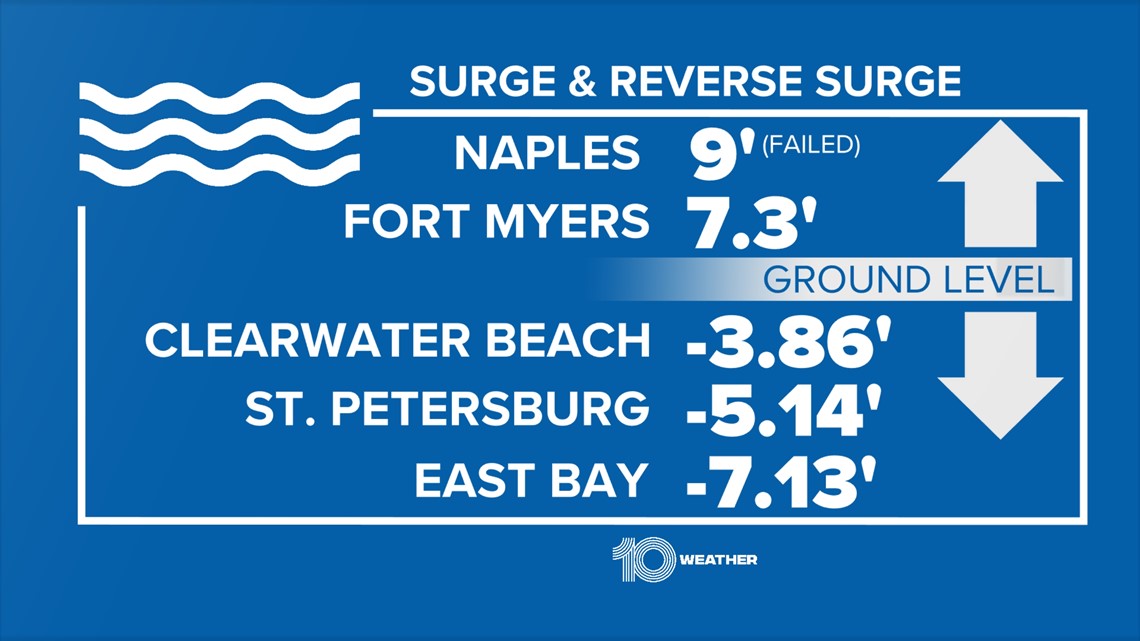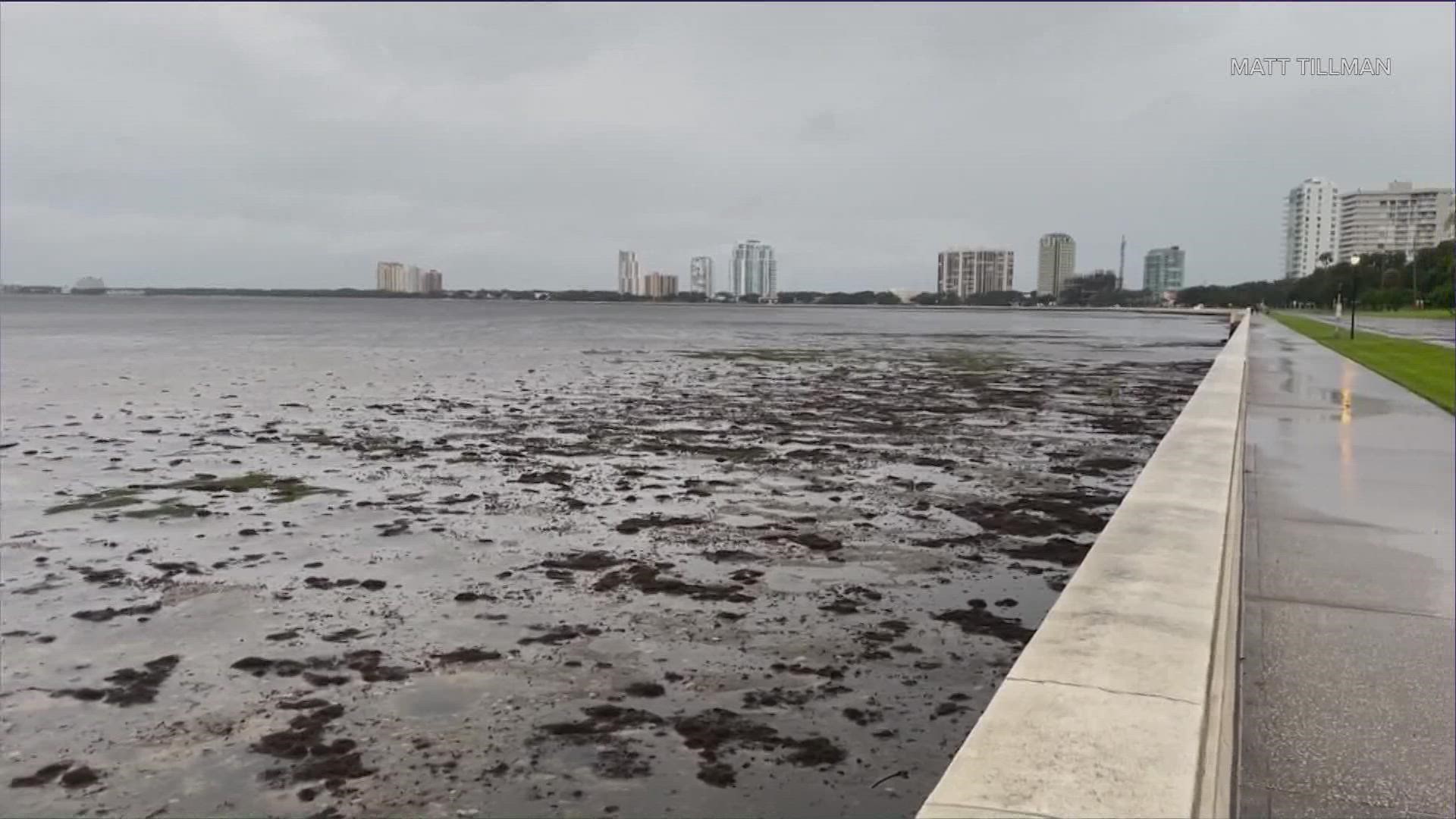TAMPA, Fla — The National Weather Service (NSW) provided preliminary surge and reverse surge measurements Thursday morning in the wake of then-Hurricane Ian.
According to the NSW, Naples saw a 9' surge before waters were so deep the measuring device failed; while Fort Myers saw at least a 7.3' surge.
While storm surges provide shocking images, the lesser-known "reverse storm surge" may be surprising.
Photos from Tampa police, St. Petersburg Police Department and the city of Venice show the exposed floor of Hillsborough Bay after waters receded prior to Hurricane Ian's landfall.
Tampa police released images taken along the bay on Bayshore Boulevard, stating in a Twitter post that, although the view is incredible, it was a clear sign Hurricane Ian was drawing near.
Measurements provided by the NWS indicate reverse surges exposed bay floor as deep as 7.13' in the East Bay. At Clearwater Beach, 3.86' of water drained and in St. Petersburg, 5.14' of water drained.


Photographs taken at the Venice Fishing Pier reflect the same thing. The National Weather Service Tampa Bay added that the water will come back — and no one should attempt to walk on the exposed bay floor at any location where there is receding water.
The St. Petersburg Police Department also posted images of the same phenomenon at Lassing Park in the southeast corner of St. Petersburg, adding that Hurricane Ian is pulling water from Tampa Bay, causing the water to recede.
This phenomenon is sometimes called "reverse storm surge" or "negative storm surge." This occurs when the wind direction blows water away from the coast, causing the sea level to drop. In this case, Hurricane Ian is rotating counterclockwise; its winds are pulling water away from the bay.
This also happened in 2017, when Hurricane Irma struck Florida and pulled water from Hillsborough Bay, due also to a counterclockwise wind rotation.
Hurricane Hacks from 10 Tampa Bay

